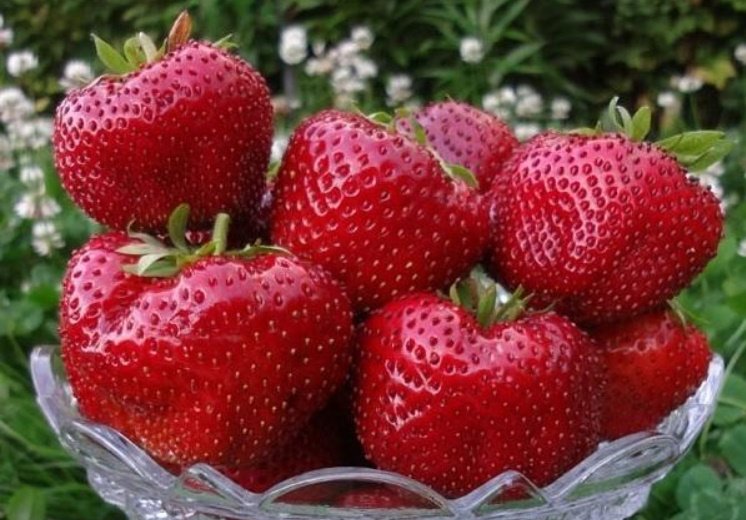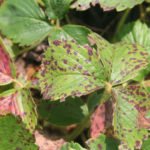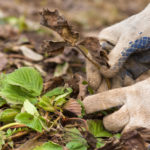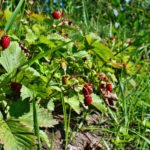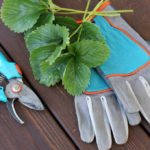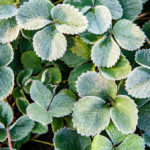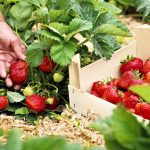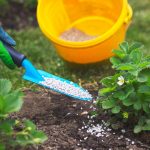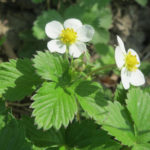Strawberries are a true delicacy. The reason for the low popularity of this strawberry lies in bipartite: fruiting female plants need male pollinators with flowers – barren flowers that don’t produce berries. This means that the total crop yield is lower.
Most gardeners prefer garden strawberry, which is the subject of this article.
How to choose healthy seedlings
About the health of plants strawberries are judged by the state of the leaves.
Signs of poor seedling
- The points on the leaves are various fungal spots that almost always accompany strawberries, but with good care do not cause much damage to the plants. Severely damaged leaves spotting speak of poor care and, most likely, the low quality of seedlings.
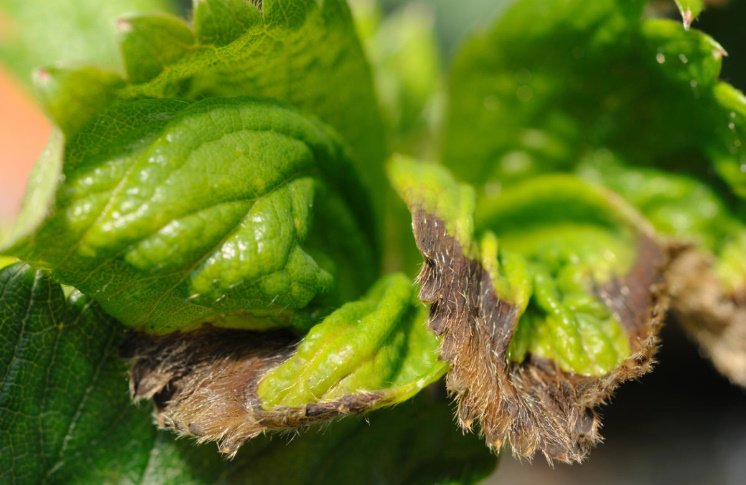
- Pale leaves-may be the first sign of a dangerous disease – late blight necrosis (death) horns. Infected plants die, there are no measures of struggle. Buying such seedlings, there is a risk of infection in the garden.
- Young leaves are wrinkled, are not deployed until the end is the work of mites.
Signs of quality seedlings
- Leaves are rich green, shiny, dense, leathery or pubescent;
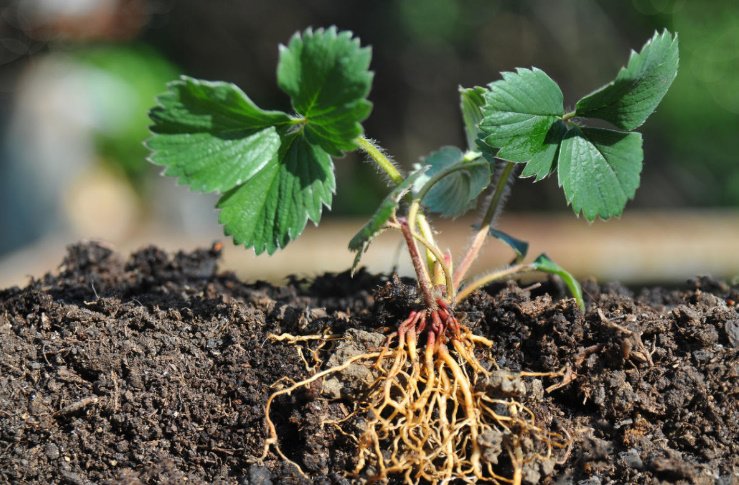
- developed root system;
- in seedlings with an open root system, the length of the roots should be at least 7 cm;
- the thickness of the horn-not less than 0.7 cm.
Planting strawberries
The amount of harvest depends on the quality of seedlings, proper planting and proper care (including summer).
Landing dates
Optimal landing time in the middle lane:
- seedling: late spring-early summer;
- the seedlings obtained by the rooting of subsidiary outlets: end of July – beginning of August.
To get the maximum yield, it is better to plant strawberries in July, on a well-lit area (even a small shadow prevents the plant from fully flowering and fruiting).
Soil preparation
First of all, you need to prepare the ground. Well dig it to the depth of bayonet shovel, make organic fertilizer (3-4 buckets of compost, humus on 1 sq.m) and dig again.
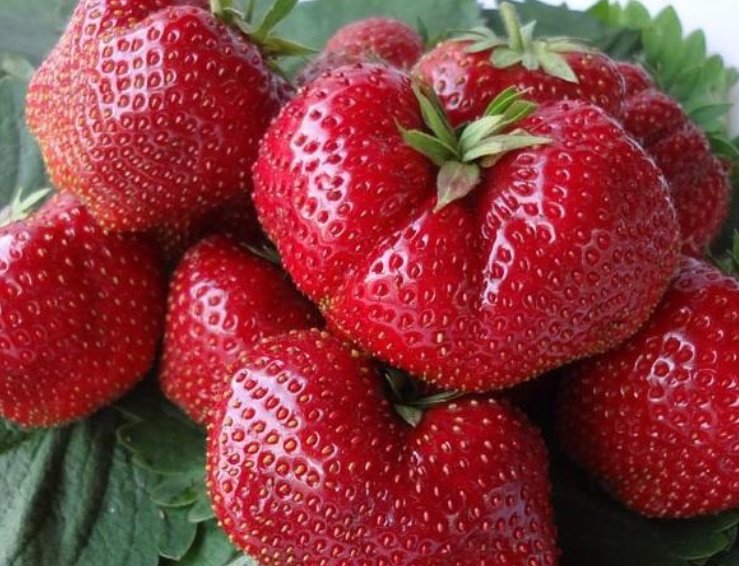
If strawberries are planted in early autumn, only superphosphate is made from mineral fertilizers. If your site is acidic soil, it must be neutralized by adding lime, as strawberry likes neutral soil. Before planting, clear the bed of weeds: wild strawberries grow in one place without a transplant 3-4 years, perennial weeds very difficult to care.
Crop rotation compliance
It is very important to observe the crop rotation: the former place of strawberries can be determined not earlier than 4 years.
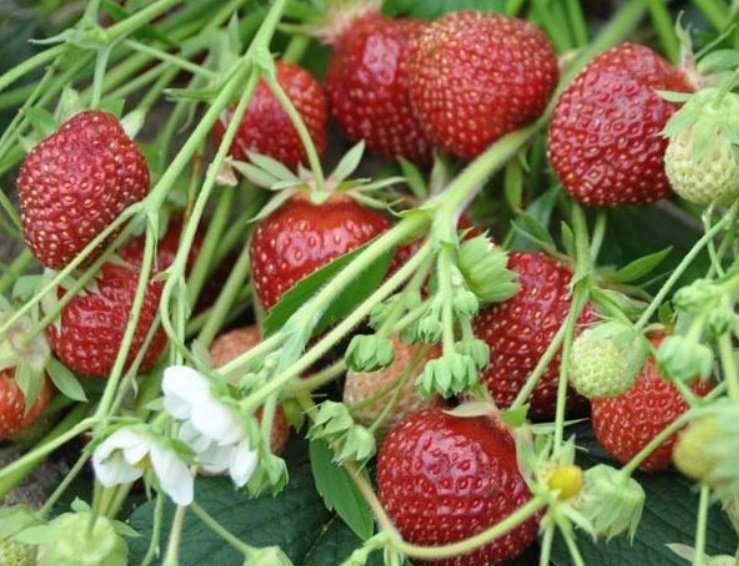
If you plant strawberries after eggplants, potatoes, peppers, cabbage or cucumbers, there is a danger of wilting and the appearance of viral diseases. Suitable predecessors-beets and carrots.
Regular rejuvenation
Strawberries quickly age and lose their yield, so it is not recommended to keep them in one place for longer than 4-5 years.
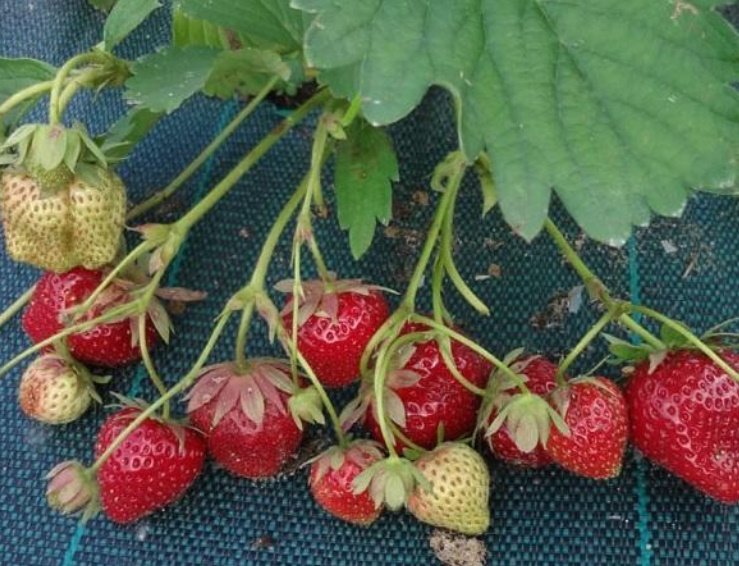
The ideal option – every year to plant a new garden, and after five years-to remove it, so your garden will have five different ages of plots:
- 1 year – new landing;
- 2 year-strawberry first year of fruiting (with a small harvest);
- 3 year-productive business;
- 4 year-the second productive plot;
- 5 years – the aging of the allotment that after the harvest cook under vegetables.
Care of strawberries
Work on strawberry beds begins in early spring.
Spring cleaning
As soon as the snow and soil around the plants dried up, it is necessary to cut and collect last year’s leaves, the remains of mustaches and peduncles with dry berries.
Loosening of soil
Loosening of the soil is very important to carry out as early as possible: autumn rains and thawed water order compacted it. Slightly Spud the bushes to grow on horns adventitious roots were under a layer of soil.
Preventive treatment
After cleaning the beds spend preventive treatment of garden strawberry from fungal diseases that could go from plant residues to young leaves. This will reduce the risk of damage powdery mildew, blights.
Additional fertilizing
With a noticeable growth of leaves, you can start feeding. For strawberries typically use granular fertilizer, sprinkling them in between the rows before tilling. You can make liquid organic feeding, their advantage is that they quickly begin to be absorbed by the root system.

But it is important not to overfeed, otherwise instead of berries you get a large rosette of leaves.
Mulching
Spread the mulch in the aisles. This is a mandatory admission, it is recommended to repeat twice a year: in early spring and late autumn. Mulch protects berries from contact with the ground, which significantly reduces the risk of rot; retains moisture in the soil; prevents the growth of weeds. There are different ways of mulching the soil: film (in an annual culture), non-woven material, sawdust, chopped straw, dry grass, compost, sheet humus, pine needles.
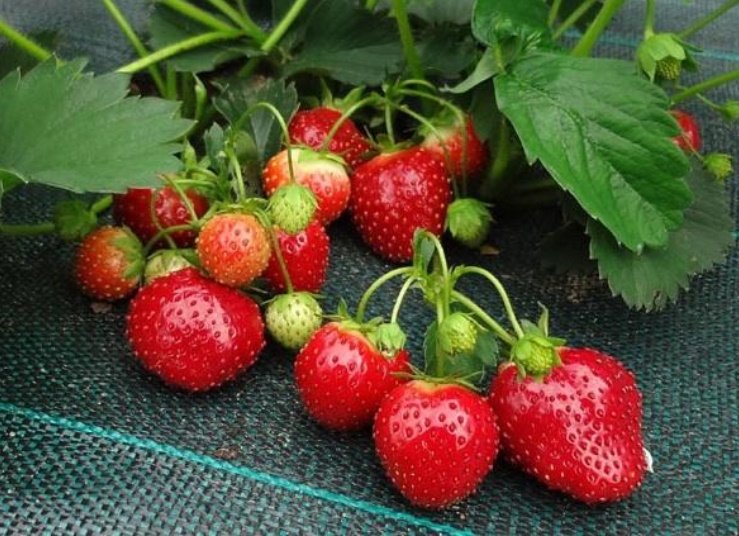
Mulch decomposes on the soil layer 4-7 cm-no less, but no more: excessive mulching in the spring prevents sunlight to warm the earth.
Irrigation
Garden strawberry is very responsive to watering. With a balanced amount of moisture in the soil increases not only the quantity but also the quality of the crop.
If you follow all these recommendations, the strawberry will grow well and please you with rich harvests!
How to choose a variety of strawberries
Strawberry varieties are divided into several categories: a single fruiting, everbearing and day neutral.
Varieties of single fruiting – the most unpretentious. They are suitable for those gardeners who do not have the ability to care for plants more than once a week, can occupy the main area of planting. To extend the harvest for a month, pick up varieties of different ripening period:
- early-June 1-15;
- mid-20 June – 10 July;
- late-July 15-30.
Remontant varieties produce fruit multiple times per season. In regions with a short summer usually have time to give two crops. To get the maximum number of berries, it is better to grow repairing strawberries with shelter, with intensive care, frequent watering and fertilizing.
Varieties of day neutral will produce fruit all summer, not in waves. Care for them the most labor-intensive: required frequent fertilizing, mulching by agro cloth
or dark film, drip irrigation is desirable.
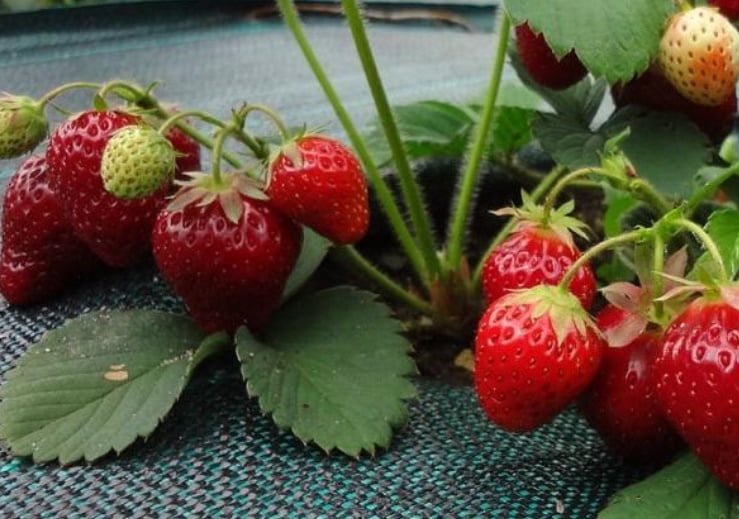
If you do not have too much time or desire to take care of strawberries all season, we recommend about 15% of the total area of landings to be allocated for early varieties.
Medium-grade high-yielding varieties, they give 50-60% of the area.
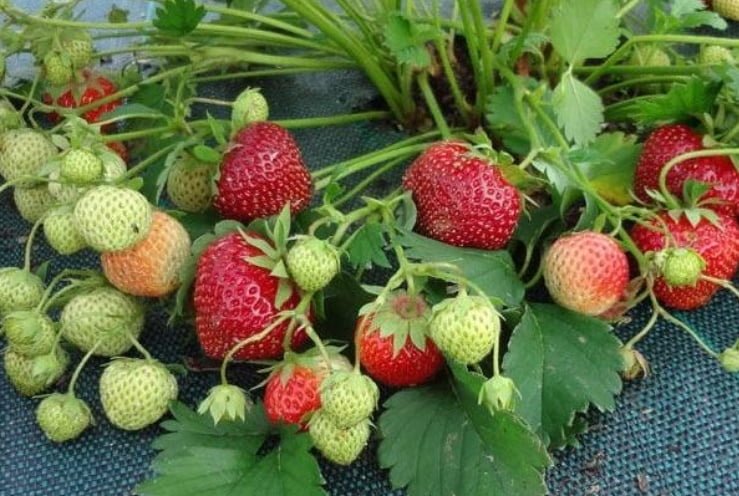
And the rest is occupied by late varieties.
That is intriguing:
By crossing strawberries with strawberries garden scientist managed to get a number of large-fruited varieties of the new culture, using chemical mutagenesis. Bushes powerful, with beautiful corrugated leaves. Above them, a cap flowers, and berries on tall straight stems. Yield is inferior to the strawberry. Oblong fruits of medium size are tasty: sweet, with a pleasant nutmeg aroma, dense (well stored and transported).
